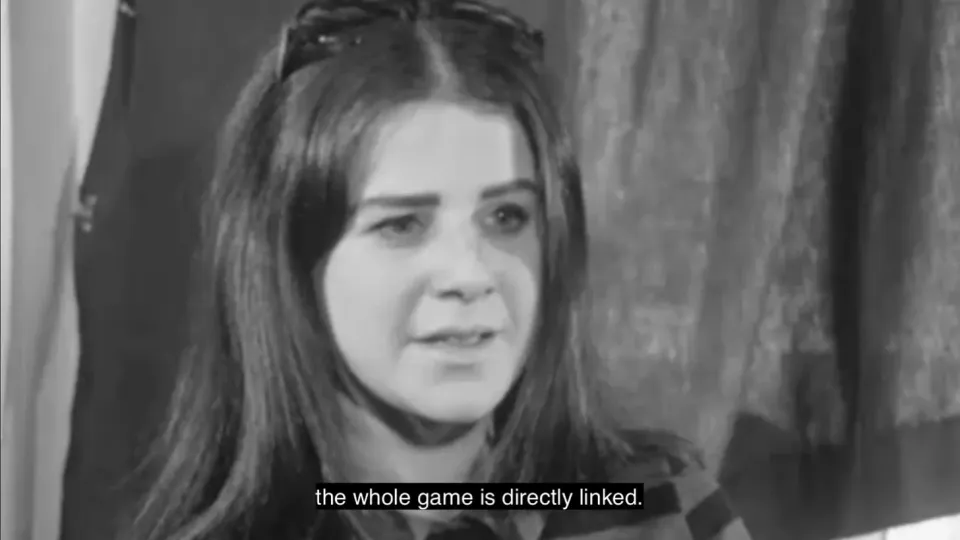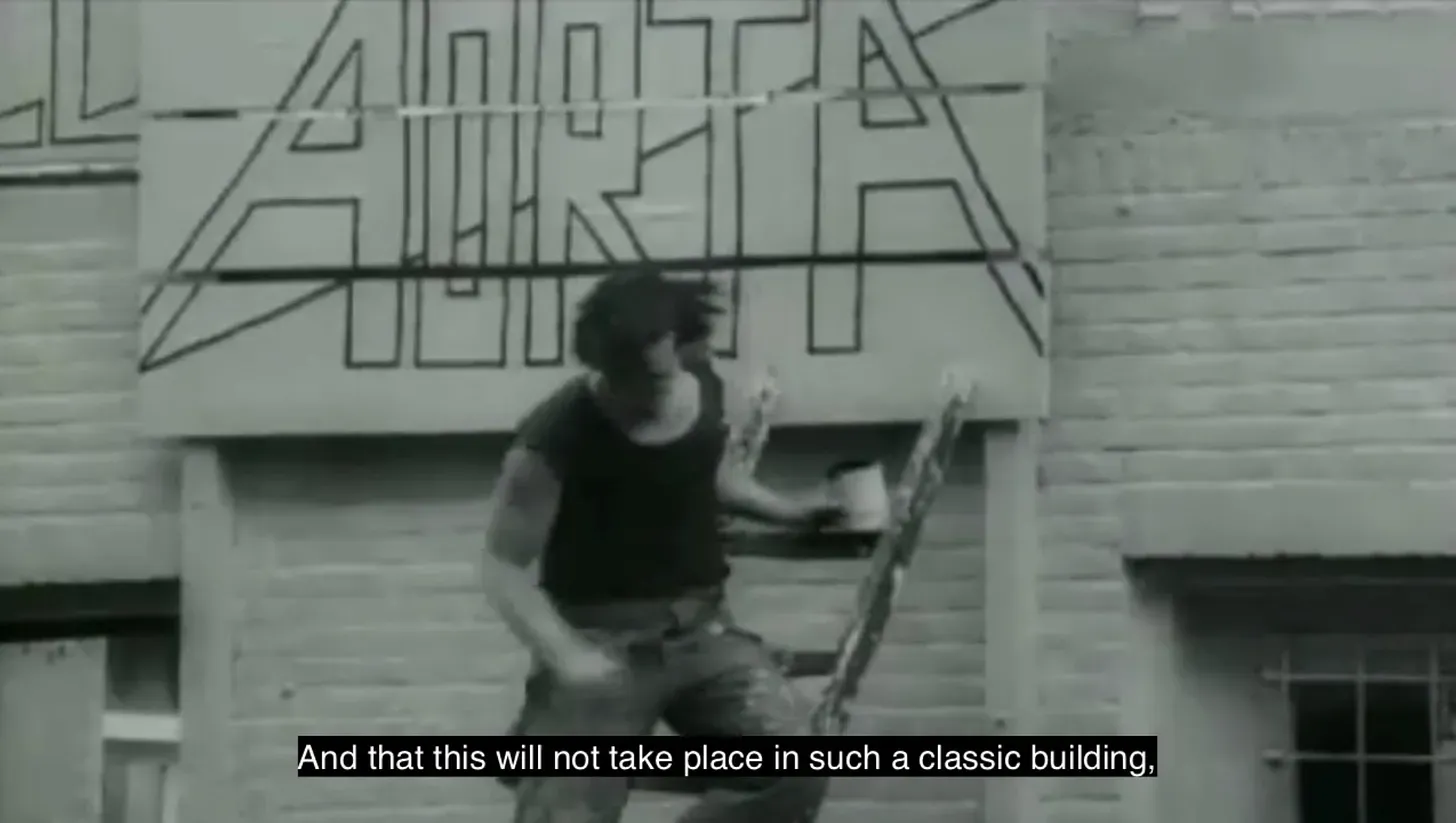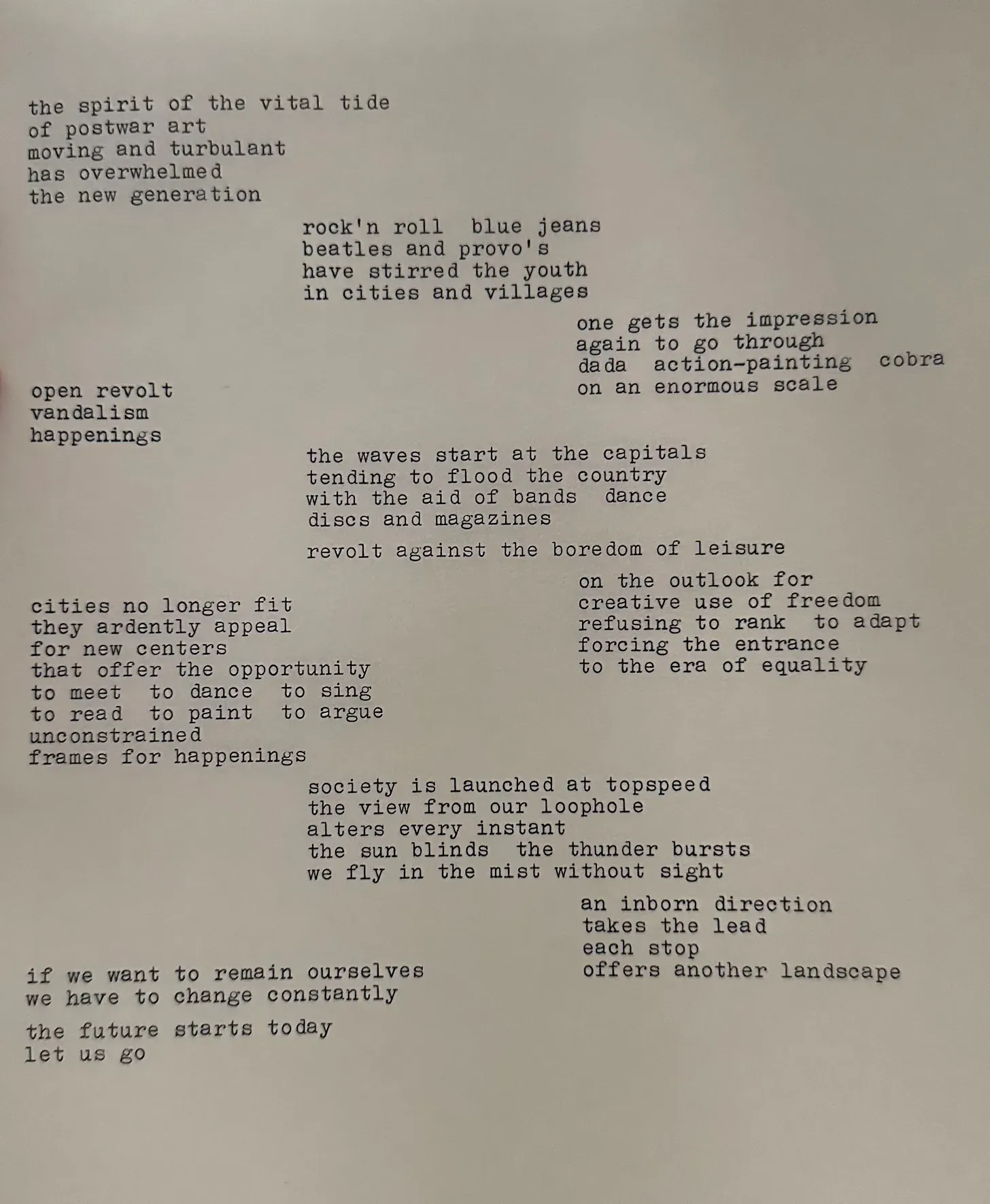Prelude

Welcome to Free Association, a newsletter about the revolutionary potential of collective creativity.
Initially, this is about my research of the social history of club RoXY and its connections to vanguard artist movements in Amsterdam after WWII, such as Cobra, Provo and punk (the book Homo Ludens by Dutch historian Johan Huizinga plays an important role here, but I will come back to that another time). I have been doing this research since the summer of 2021, and it has resulted in the release of a 20-minute film, RoXY (2022).
Additionally, this newsletter helps me write a book about the same subject, with the generous support of the Mondriaan Fonds. So I will revisit the books I have read and the films I have watched to unpack some of the footage I have used and the words that are spoken in the film. Furthermore, I will use this space to highlight some of the excluded individuals and communities from the dominant narrative of 20th century art history of Amsterdam, such as the black jazz scene, women’s movement, and the LGBTQI+ community.
Ultimately, this newsletter will explore further association of above movements with earlier ones, such as De Stijl, dada and others, with the aim of salvaging hope, love and resolution for dealing with the present and building for a better future.
I have my eyes set on going all the way back to 1848, the beginning of Dutch democracy. But let’s start in 1972.

Artists are the prophets
In 1972, former Stedelijk Museum director Willem Sandberg was interviewed as part of a series of documentary portraits of Dutch artists, called De Onvergetelijken. In the programme he has a number of revealing reflections that I felt were relevant for my research:
“I believe artists are the prophets, not the museum people. And I have faith that artists now are trying, with their spatial art, their environment art, their social art, to find a solution to direct contact between their creative work and the public. And that this will not take place in such a classic building, in such a traditional space. I believe we can look to the future with confidence." (my translation)
At that time, he’s talking about the final exhibitions he organised, Bewogen Beweging and Dylaby (a contraction of the words ‘dynamic’ and ‘labyrinth’). In these exhibitions he gave the keys of the museum to the artists, and let them curate their own show together. Not only that, the visitors were invited to interact with the artworks, and would thus become part of the exhibition.
In the above quote Sandberg goes even further. He says artists will not only no longer need museum people, but will no longer need museums to exhibit their work. This is 10 years after artists had organised the first happening Open Het Graf in Amsterdam in 1962. Years after Provo had started rallying young people at het Spui to provoke the authorities, and hippies had flooded the streets, squares and parks of Amsterdam. 3 years before Sandberg’s interview, in 1969, the first house had been squatted, and soon squats would also become the new studios, galleries and music venues.
So Sandberg had his finger on the pulse in 1972. But he had always had. That is what made him such an inimitable museum director. In 1967 he published the book Nu 2 in which he reflected on the development of art in the 20th century so far. It is a beautifully written, designed and produced book with poem-like observations and impressions. You can still find it in second-hand copies online.
Read this and see for yourself how the whole game is directly linked:

In that same documentary he repeats what he wrote 5 years earlier:
“I have seen things move forward. That we progress. In this way, I see the Cobra movement as a kind of prelude to what happened later with Provos, hippies and other happenings." (my translation)
I used this quote in the ending of my film to summarise the connections that had been established throughout the film, precisely between dada, Cobra, New Babylon, Situationist International, Fluxus, Provo, punk and the RoXY.
The best artwork of the nineties
Art critic Tineke Reijnders corroborates this reading in the monograph of RoXY co-founder Peter Giele Verzamelde Werken. She writes:
“When Peter Giele developed his ideas for Club RoXY in the latter days of Aorta, he immediately lifted the autonomous body of thought to the level of the nightclub, to the domain of Constant's playing man, to the ecstasy of the Situationist dérive. Club RoXY (1987-1999) became the ultimate fusion of recreation, creativity, fashion, music, dance, love, life. Amsterdam probably experienced the apotheosis of the post-war freedom ideal in RoXY, it became the realisation of the city dweller's dream zone.” (my translation)
The one person who knew both Willem Sandberg and Peter Giele very well is filmmaker Rob Schröder, whose film Van Een Andere Orde (1998) he so generously allowed me to use for my film. Rob has been the most helpful person in telling the story of collective resistance by artists in Amsterdam. From the 60s onwards, he became part of the narrative. As a teenager, he went to see a Bertolt Brecht play at De Brakke Grond in the heart of the city. When they left the theatre, they witnessed the police chasing Provos in the streets. It was the time of the Telegraafrellen. Later, in the 70s, he studied at the Gerrit Rietveld Academy, where he remained a teacher until 2021. It is at the Rietveld he could see this history unfold
In the many hours talking about all of this Rob said:
“The RoXY is the best artwork of the nineties in Amsterdam” (my translation)
Reading Giele’s motivation for creating the RoXY gives you another insight. In 1985, he wrote Cultura Artis Magistra – Club Solitair, a mix between a manifesto and a business plan. In his biography Laat de nacht nooit eindigen, fellow co-founder Eddy De Clerck remembers it as the start of the RoXY.
“After Disco Bizar, PKP TV, Soviet Sex, Amok, Royaal and Aorta, we as artists feel a strong urge to create a new, different and more intense personal place, as a meeting point for art and life. A place entirely determined by the artists themselves, open to all kinds of impulses from the entire culture that surrounds them. For the unfolding of relationships, fantasies and ideas, for the cultivation and realisation of the creative thought. A hospitable and unique accommodation, a garden of the imagination, as a refuge from ordinary existence. As a spirited, inspiring base for those further explorations of its guests. As a breeding ground and stopping place for the artistic vanguard. In a space that can be completely transformed, by means of a renovation to be carried out largely in-house, into a guest house of about twelve rooms, combined with a club and exhibition space.” (my translation)
He wasn’t really looking for a club per se, but a mix of cultural uses. Although in an interview with Rob he said he wanted to open an artist hotel. When he was offered the RoXY cinema as a possible space for his ambitions, he decided to open a club instead. It took another two years before they managed to do so.
Collective creativity
As with Bewogen Beweging, Dylaby and the happenings that followed them, club RoXY would become a creative environment almost without hierarchy. Where artists and audience would interact directly. It was as Sandberg had said, with the club artists had found the solution to direct contact between their creative work and the public.
This collective performance had also been foreseen by artist Constant Nieuwenhuijs, whom had collaborated with Sandberg at the Stedelijk Museum in 1949, as part of the newly found Experimentele Groep Holland (the later Cobra movement). In their manifesto Reflex, Constant wrote in 1948:
The masses, brought up in concepts of beauty that have arisen outside themselves, do not yet know their own creative possibilities. These are stimulated by an art that does not specify but suggests, which, by arousing associations and speculating on them, will bring about a new fantastic way of seeing. Because an appeal will be made to the beholder's own creative activity, an activity inherent in man's nature, this way of seeing is within everyone's reach and comprehension, as soon as aesthetic conventions no longer hinder the working of the subconscious. The spectator, whose role in our culture has until now been exclusively passive, is from now on involved himself in the process of creation. The interaction between producer and viewer gives art in this period a powerful stimulating influence on the process of becoming a popular creativity. (my translation)
Constant argues against a capitalist individual culture and in favour of a revolutionary collective creativity. This will become clearer in his later writings, both in his time as a member of the Situationist International, and while working on the visionary architecture of New Babylon.
In 1962, he wrote the following about New Babylon for the literary magazine Randstad:
If we want to study our urban environment, the industrial world in which we live, and if we want to change that world, if we want to change the way we live and the environment in which we live, then we have to realise, that we engage in collective creativity, in an activity that is at the level of art, in culture. The state of culture at the moment, the decomposition of the individual art forms, the apparent impossibility of renewing or even continuing these art forms, create a void in which this work emerges as an urgent necessity. The demise of natural life forms, and the ever stricter organisation and mechanisation of society, have greatly reduced the possibilities for individual expression, for play, for creativity. Our refusal to continue to accept this state of affairs, to adapt the existing culture to it, leads us to find new forms of play and creativity, but at the same time we are forced to rethink the whole concept of culture, and finally to another, new conception of culture, of play, of building up our sphere of life. (my translation)
At some point I had the feeling the RoXY would have been the club inside New Babylon. Where Provos would go for a good night out. Where the jazz of the Leidseplein would mix with the happenings of the Spui, and the communal energy of squats would merge with the joy of ballroom culture.
The dynamic labyrinth was to Willem Sandberg, what the collective creativity of New Babylon was to Constant, and what the total art of the Love Ball was to Peter Giele. Imagination, play and community.
In the words of Jacqueline de Jong: they wanted to create a cultural, homo ludens society.
More on this next time.
Juha